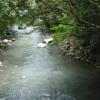-
Posts
256 -
Joined
-
Last visited
-
Days Won
3
Content Type
Profiles
Events
Forums
Gallery
Downloads
Community Map
Posts posted by Tinman
-
-
Ahhh. Wouldn't the pressure go down on the gauge if there was less fuel?
In any case, I've been battleing with a bigger problem - my new 16 inch cyclone rad fan called it quits yesterday. Sheesh. Trying to find a replacement rad fan motor, or just a decent rad fan assembly I can count on...
-
Oh, and my sending unit is at the regulator.
-
That's a good idea Rocmoc. I thought of maybe water in the gas, but dirt plugging the inlet might be it too.
I don't know what you mean about testing the pump under pressure - at full throttle, the gas pressure gauge reads a constant 45 PSI.
-
]Thanks Rocmoc,
Gauge reads a constant 45 psi, new bosch fuel pump, new fuel filter. I'll try wires first, as that seems the most likely. OEM or aftermarket wires?
-
Thanks guys. Did anyone buy aftermarket cables for their T2, or go OEM? I only have 7000 miles on mine, so I'm surprised it can be the cables.
A friend of mine has a compression gauge. I'll ask him to check it. But the problem does go away intermittently, then comes back, so I'm guessing its not that.
-
Any of you heard of this?
I've had rough throttle issues for a while, so I worked it out to a plugged carbon canister. Stomping on the gas, especially after filling up usually resulted in a coughing and spitting engine. Unhooked to vent hose from the canister coming up from the gas tank and problem is solved.
After two days of no problems, I have this and it has me stumped big time.
Driving home at 100 kms/hour, I filled up. It starts raining. When I hit 3500 rpm in 5th gear, the engine misfires repeatedly. If I let go of the throttle to below 3500, its fine. Does this consistently. It acts as if there's a rev limiter.
So I played around. dropped it into fourth, and I could do 4500 rpm, but then misfires. It seemed that if I hit 60 kms/h, it misfires.
I should ad that before this issue started I heard a loud click.
Any idea?
I can't even begin to wrap my head around this one...
-
I just went home-made mechanical. Easier, and pretty failsafe.
-
Just curious here: Are swingarms twisted on machines with bigger tires, or are they twisted with stock tires too? Careful on answering - because if it's only on bigger tires, then the arms should be boxed before throwing bigger tires on. Otherwise, nothing much to worry about if you're running stock.
-
This is good to know I've added a back seat, meaning another 300# to the vehicle. Although I don't do anything too crazy, the terrain is very rough here. I'll be boxing mine in as soon as possible, and adding longer bolts too
-
Once I get some more spare cash, I'll be going the Lenny way, adding a mount with three holes, moving the diff lower, adding a 1/2 plate on the bottom (cus I beat the shit out of my 3/16), and. well. that's it. for now.
As for being disheartened Charlie, I've played on some other machines back home, and I prefer the joyner.
-
If the new bearings are loose by only one or two thousands, I would contact Loc-Tite and see if they make a bearing seat compound that will take high pressures. If they do, this could solve the problem. If its looser then that, I would talk to a plater to see what they can do. I would think that a plating would need to have a compressive strength of 20,000 to 25,000 psi to be strong enough.. This would be better then welding and grinding which would be a last resort but probably a little expensive. Getting a nice clean weld on the ID with it being as deep as it is would take a good welder. I would be inclined to hire a professional welder that, that is all they do. Hard to find a really good welder but they are out there, call around to people that hire out their production welding. Don't have the machine shop do it. Let them do the machining. I would think that an interferrance fit of about .0005 to .0010 would be enough but talk to a bearing supplier or look it up on google. What ever you do, don't hammer the bearings in place unless all the hammering blows are on the outter race edge only. Pressing in is better,
Lenny
From my machine shop days, bearings are usually .001 / inch interference. Which means a 6 inch dia bearing would be press fit .006, which sounds like a lot but worked fine. We would usually heat up the bearing in oil, then drop it on, or if on the inside, freeze them in nitro. Without either, lube well with decent oil and carefully knock them on, hitting the part in contact with the hub.
-
Ahhhhhh. Ok Lenny. Thanks so much. I'll change it tomorrow and see what happens.
-
All connected to the second 02 sensor.
Funny thing happens - the first minute or two I'm reading lean, as in 16/1 pretty much through the whole rev band, then my readings go all screwy - from 11/1 to 20/1. Sometimes I get confirmation by how the T2 runs, but sometimes not. Any ideas?
-
and 4000 miles. Fusebox went at 2000. Did diff upgrades from Lenny (THANKS LENNY!) fixed other bits and pieces, nothing major. Abuse the hell out of it though.
-
Friggin cool Dedub. I hate you. In a nice way.
-
Thanks Charlie. I just went with a huge 750 amp one, which powers all my equipment when I do my volunteer stuff. Also, there's lots of reserve if I need to winch the machine with the engine off (which would be if it flips)
-
 1
1
-
-
You may find expended shells too. That wouldn't be so nice.
Here in Panama, a metal detector would be useless, as everyone throws out their trash everywhere.
-
Joyners are narrow band. A narrow band sensor doesn't tell you much. It only senses rather it is too rich or too lean but not by how much. I don't think I would waste my time on the narrow band.
Lenny
The A/F guage does say to connect to narrow band, but I can understand what you mean. If it doesn't work well, I can always pull the last O2 sensor and install a wide band one. There is a thread on replacement O2 sensors somewhere here...
-
Do you have the computer wiring schematic? It can be downloaded from http://www.utvboard.com/topic/392-parts-pieces-and-information-for-our-troopers-joyners/ It's at the very end of the post.
According to the schematic, the one heavier wire is the 14 volt feed wire and the other two go to the computer. You could unplug the connector and measure the supply side voltage on each pin or measure the resistance to ground of the sensor side, the one with a resistance will be power, the two with out resistance to ground will be you sensor.
So does that mean that it doesn't matter which of the two I connect to?
-
Does anyone know which of the 3 wires on the oxygen sensor (2 grey, 1 black) carries the signal I can tap into for an Air/fuel ratio gauge?
I have an annoying hesitation I'm trying to figure out, and just got the gauge in.
Also, the gauge taps into a narrow band sensor, which I think the joyner has. Am I correct, or do I have to get another O2 sensor?
Thanks to any who reply!!!
-
All the winches I saw have the wires connected by screws. So, changing relays and controller is easy. Some controllers on ebay come all in one - relay and controller, like mine.
-
There is a little schrader valve near the tank to inflate the shocks. If you have a place near you with nitro, fill with that.
-
Have a champion winch or an aftermarket winch that has the generic control I have? (See pic on link below)
The rivets holding a plastic cap on a backing plate failed, causing a short circuit. It can also fail leaving you stranded when you need the winch the most.
If you have a similar control, I would advise at the very minimum tightening the rivets and properly peening them over, and if you could, put in better rivets.
-
I may just put air, which is 80 nitro anyway. I can put in welding gas, but I need to get a fitting - no big thing. However, with the reservoir:
1) The larger air chamber won't allow air to heat up as much as if it was in the small shock reservoir, (the shock should be filled with nitro anyway, but I don't have that here)
2) I can up the pressure, or lower it on both shocks at once instantaneously. I can also keep a check on the shock pressure, which I couldn't do before. This is important for those who load their vehicle down with gear for hunting, or like I did, with an extra seat and two people in the back.




Now this is weird...T2 1100 throttle issues
in Joyner UTV SxS Forum
Posted
That's what I fear the most. I hope it's not the ECU. The problem hasn't come back, but it hasn't rained either...